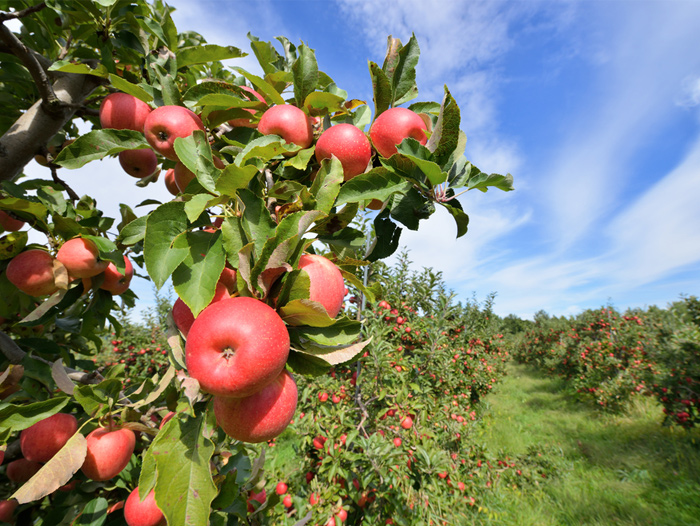Fresh From the Field: South Africa (RSA) Apple and Pear Season
March 29, 2023 | 4 min to read

The apple and pear season began a few weeks ago, and there are quite a few challenges ahead. As a rule of thumb, the RSA apple and pear industries are very stable, showing small yet constant growth. This growth is mainly due to the replanting of new varieties with better yields.
However, it is anticipated that both apples and pears will experience a decline in export figures for the 2023 season. Apple exports are expected to decrease by 5% to 43.19 million cartons, and pear exports are predicted to decrease by 6% to 19.86 million cartons. Even with this projected decrease, the expected figures are marginally higher than the two-year average for pears and only slightly lower for apples. See the latest export estimates below:
Apple export estimate 2023

Pear export estimate 2023

This decline in exports can be attributed to the hailstorms that occurred in late November and early December in regions such as Ceres and Langkloof. Unfortunately, Langkloof has experienced additional hailstorms in recent weeks, which may result in even lower export figures going forward. Some of the major players in the industry are speculating that the numbers should be between 8% and 10% lower than last season, which would be a significant setback for the industry.
For the time being, the market in Europe is looking strong, and maybe even under-supplied. On the other hand, the African market is facing different challenges. The Nigerian currency is fluctuating, and West Africa is experiencing a dollar shortage. Inflation is also a major concern in Africa with Ghana experiencing an alarming rate of 54.1%. Despite this, Africa remains a significant importer of apples from RSA. African countries are particularly fond of Golden Delicious, which is still one of South Africa’s biggest-volume apple varieties.
The initial assessment of the South African pome fruit crop notes that electrical load shedding is having a significant impact on the crop’s viability. To put the load shedding issue into perspective, South Africa experienced only 5 days of load shedding in 2018, which grew to 51 days in 2022. In 2023, it is hard to think of a day where load shedding didn’t occur, and most days this meant 4 to 6 hours without electricity.
To add to the issues, we experienced massive delays due to strong winds in the Cape Town harbor. From January to February, over 15 days of loadings were lost. These difficulties are contributing to another very challenging season. A lot of difficult decisions have been made that will have a direct impact on the bottom line. The effects of these decisions will be felt by everyone, from the growers to the governments, and off course, the consumers.
To provide some numerical context, Goldens, Royal Galas, Flash Galas and Joya apples have all started on a strong note, but the export figure up to week 9 was down 15% compared to the same week last season. We are +/- 10 days earlier than last year, but wind delays out of Cape Town are slowing down exports.
The biggest market for the 2.65 million cartons of apples exported season-to-date is Africa at 48%, FEA at 35%, and ME at 13%. These three markets took 96% of all apples exported up to week 9.
The pear harvest is also starting around 10 days earlier than last year. Some areas are even saying that they are 14 days earlier than last year. The Packham pears have made a good start, and the first offerings from Grabouw and Ceres look excellent. Although the export figures on pears up to week 9 are 20% lower than last year, the goal is to make up the shortfall once shipping operations resume. The Forelle pear harvest also began last week and packing of the first FEMA Forelle is iminent. The expected crop size on Forelle is around 4 million, making it the second biggest variety after Packhams at 8 million cartons.
The biggest markets for the 3.75 million pears exported up to week 9 were the Middle East at 25%, Europe at 29%, Russia at 19%, and FEA at 15%. These four markets took 88% of all pears exported.
While the first nine weeks of exports have brought their fair share of challenges, things are looking strong moving forward. The industry is making progress, and even though early export figures for apples and pears are lower than expected, we are optimistic that it will pick up quickly going forward.
